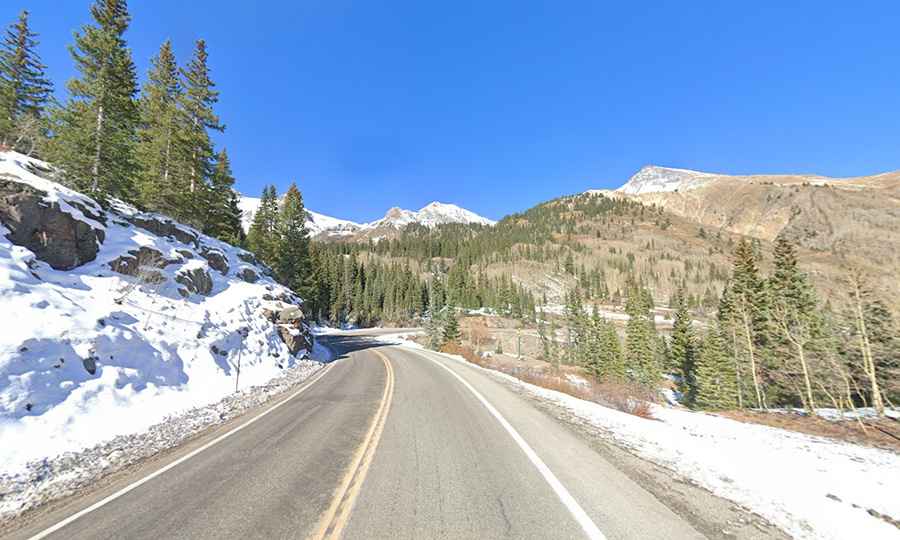Top 5 Most Dangerous Roads in America?
You're navigating America's deadliest highways where Interstate 45 between Houston and Dallas leads with 56.5 fatal accidents per 100 miles, followed by Interstate 95's 382 annual fatalities across sixteen states.

Colorado's US Highway 550 features unguarded 1,000-foot drops at 11,000 feet elevation, while Arizona's Interstate 10 experiences 3.5 times the national average for tire blowouts. Florida's US Route 1 records fatal crash rates 40% above state averages. These corridors reveal critical patterns behind their lethal statistics.
Interstate 10 Through Arizona's Desert Corridor
Stretching across 150 miles of Arizona's Sonoran Desert, Interstate 10's Phoenix-to-California corridor records an average of 85 fatal crashes annually, making it one of the deadliest highway segments in the United States.
You'll encounter extreme desert conditions here—temperatures exceeding 115°F cause tire blowouts at 3.5 times the national average. Dust storms reduce visibility to under 10 feet within seconds.
Wildlife crossings pose significant risks: you're facing 1,200 documented animal collisions yearly, primarily involving javelinas and coyotes during dawn and dusk hours. The corridor's 75-mph speed limit combined with these hazards creates a fatality rate 40% above interstate averages.
US Route 1 Along Florida's Atlantic Coast
While Arizona's desert highways present environmental hazards, Florida's US Route 1 generates danger through sheer traffic volume and infrastructure limitations. You'll encounter 545 miles of coastal driving where annual accident rates exceed 1,200 incidents.
The road's narrow two-lane sections handle 45,000+ vehicles daily, creating bottlenecks despite scenic views of the Atlantic. You're facing outdated bridge designs, limited shoulder space, and frequent pedestrian crossings in densely populated areas.
Hurricane evacuations compound risks, as this primary escape route can't accommodate surge capacity. Fatal crash rates are 40% higher than Florida's highway average, with head-on collisions representing the predominant accident type.
Interstate 95 From Miami to Maine
As you travel north from Florida's coastal highways, Interstate 95's 1,920-mile corridor presents escalating statistical hazards that rank it among America's deadliest interstates.
You'll encounter 382 annual fatalities across sixteen states, with Connecticut's stretch recording 42.1 traffic accidents per mile annually. Urban bottlenecks through Miami, Jacksonville, Washington D.C., and New York City compound collision risks by 67%.
While scenic views emerge through Carolina's pine forests and Maine's coastline, they're overshadowed by aggressive driving patterns, inadequate shoulder widths, and 85-mph speed differentials between lanes. You're navigating infrastructure supporting 110,000 daily vehicles despite 1960s design specifications for 40,000.
US Highway 550 Colorado's Million Dollar Highway
Twenty-five miles of US Highway 550 between Silverton and Ouray carve through Colorado's San Juan Mountains without guardrails, earning its designation as the Million Dollar Highway and America's most treacherous mountain pass.
You'll navigate hairpin turns at 11,000 feet elevation with 1,000-foot drops mere inches from your tires. Annual statistics record 400+ accidents despite scenic views attracting 750,000 vehicles yearly.
Critical driving tips include maintaining 25 mph through switchbacks, downshifting for engine braking, and avoiding the outside lane. Winter conditions amplify hazards with 140 inches of annual snowfall creating avalanche zones across twelve designated paths.
Interstate 45 Between Houston and Dallas
Four hundred miles of Interstate 45 connecting Houston and Dallas rank as America's deadliest highway corridor, recording 56.5 fatal accidents per 100 miles according to the National Highway Traffic Safety Administration's latest data.
You'll encounter accident hotspots near Conroe and Huntsville where rural sections transition to urban sprawl. Traffic statistics show 285 fatalities occurred between 2016-2019, with speeding contributing to 42% of crashes. You're facing elevated risks during morning commutes when collision rates spike 31%.
The corridor's combination of high-speed limits, heavy truck traffic, and frequent construction zones creates particularly hazardous conditions you'll need to navigate carefully.
Before taking one of these routes, you can watch documentaries or shows that discuss dangerous roads and how to prepare for a safe journey, on platforms like YouTube or IPTV USA, which provide access to live channels and VOD in high quality.
Frequently Asked Questions
What Time of Year Has the Most Fatal Accidents on Dangerous Roads?
You'll find accident statistics show winter months, particularly December through February, have the highest fatality rates. Seasonal trends indicate icy conditions, reduced visibility, and shorter daylight hours contribute to a 17% increase in fatal crashes during this period.
Which Vehicle Types Are Most Vulnerable on America's Dangerous Highways?
You'll find motorcycles face 28 times higher fatality rates than passenger vehicles. Large trucks exhibit significant vulnerabilities including extended stopping distances and rollover risks. Motorcycle safety equipment can't compensate for exposure, while truck vulnerabilities increase dramatically on curves.
How Much Do Dangerous Roads Cost the US Economy Annually?
You're looking at $242 billion in annual economic impact from dangerous roads. Accident statistics show crashes generate medical costs, property damage, lost productivity, and legal expenses. That's approximately 1.6% of GDP lost to road safety issues.
What Safety Equipment Should Drivers Carry When Traveling Dangerous Routes?
You'll need comprehensive emergency kits containing flares, reflective triangles, and first-aid supplies. Essential safety gear includes tire chains, jumper cables, flashlights with extra batteries, blankets, water, non-perishable food, and fully-charged communication devices for emergencies.
Are Dangerous Roads More Deadly at Night or During Daytime?
You'll face higher fatality rates at night. Night visibility reduces by 90%, while your reaction time increases 1.5 seconds. Driving behavior deteriorates with 60% of fatal crashes occurring after dark despite 25% less traffic volume.